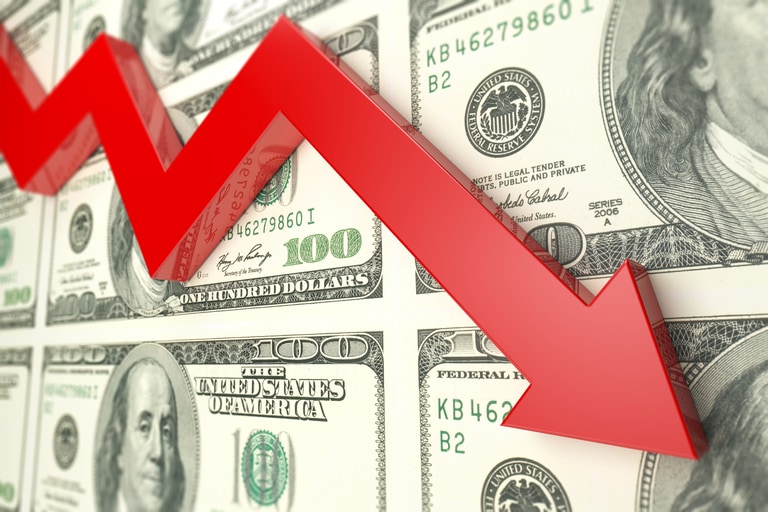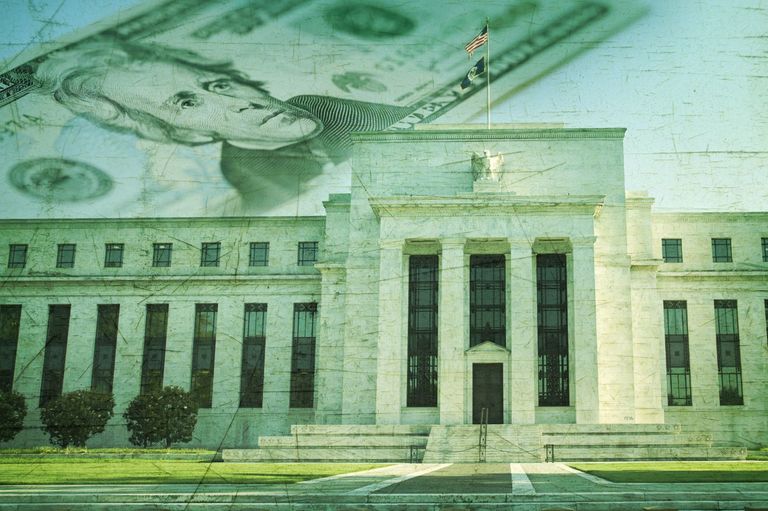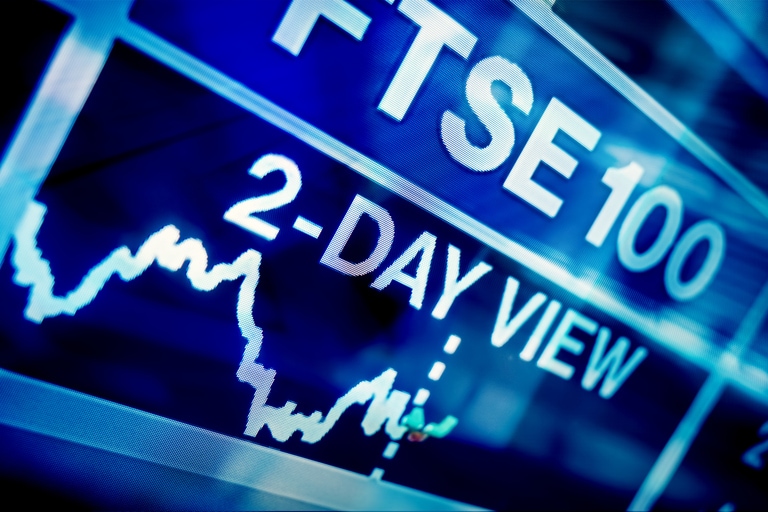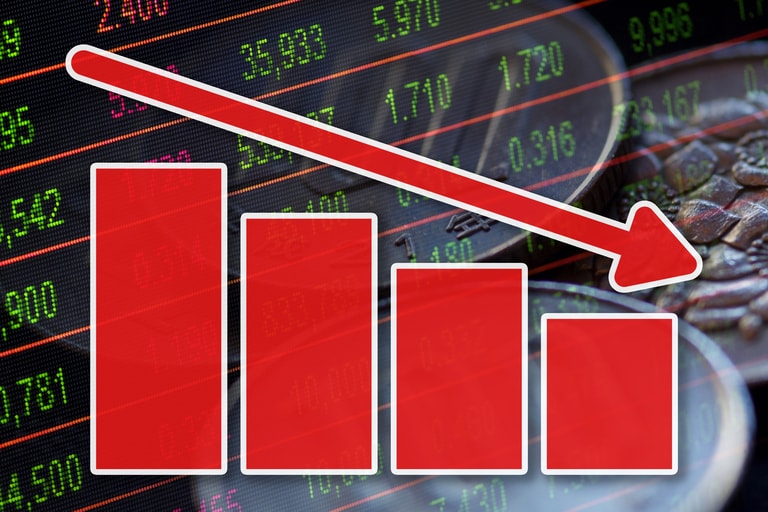Read our pick of the top stories to look out for this week (15-19 March), and view our key company earnings schedule.
Michael looks back at this week's price action, the consequences of the rise in US 10-year yields, and analyses the outlook for the US dollar, euro and sterling against the backdrop of the latest Federal Reserve meeting. He also previews the Bank of England meeting, and covers the key levels on a range of different markets.
China retail sales (February)
Monday: Retail sales growth in China returned to positive territory in August last year, and since then has continued to improve month on month. The lack of a second wave has certainly helped, and while demand still remains well below the levels of late 2019, there have been four consecutive months of gains since September. December’s rise was 4.6%, a slight decline from November’s 5% rise, and below expectations. This is a little disappointing given that China appears to have avoided a second wave.
This caution among Chinese consumers suggests that they may have been holding back spending ahead of Chinese New Year, and towards the first anniversary of China’s own full-scale lockdown. For now though, the low number of cases is seeing Chinese consumers slowly reopen their purse strings. This week’s numbers for January and February are expected to show a huge contrast to a year ago when the February lockdown in China hammered demand. A rise of 32% is expected compared to last year, as domestic demand and Chinese New Year sees a ramp up in spending.
Greggs full-year results
Tuesday: At Greggs’ last trading update at the beginning of the year, management estimated that full-year total sales would come in at £811m, down from the £1.17bn in 2019. Considering the challenges facing food retail over the period of the pandemic, this is a fairly solid performance, especially as Greggs still managed to open 28 new shops in the reporting period.
The company still expects to post a full-year loss of up to £15m. With a lot of shops restricted to takeaway service only, sales were always likely to be lower, and to come in at just over 80% of the previous year has to be considered a win. In terms of the outlook, management doesn't expect profits to return to pre-pandemic levels until 2022 at the earliest. On the plus side, the expectation was for another 100 net new stores in the year ahead. Currently the Greggs share price has risen over 75% from its September low, and within touching distance from the pre-pandemic peaks of January last year.
US retail sales (February)
Tuesday: Over the last 12 months of US consumer spending, its resilience has largely been driven by the US government and the issuance of stimulus payments. The initial rebound in the aftermath of the first lockdown was one such instance, before a slowdown into year-end, as the expiry of certain unemployment benefits and uncertainty over the US election, along with the imposition of tighter coronavirus restrictions, started to weigh on consumer confidence. This consumer slowdown, along with the political deadlock on Capitol Hill over the stimulus package, saw retail sales in November and December slide back quite sharply, by -1.4% and -1% respectively.
Since then, economic data has picked up markedly, helped in some part by the new $900bn stimulus plan that was agreed at the end of last year, prompting a big rebound in January retail sales of 5.3%, to a seven-month high. The big question now is whether this positive momentum is sustained in February, or whether there's a slight pause. The US labour market has certainly seen the positive trend continue, which suggests sentiment ought to remain positive, though there could also be a negative bias due to the cold weather snap, which kept people indoors. Expectations are for a slowdown to 0%, however this is likely to be followed by a March/April surge as new stimulus payments start to get rolled out.
US Federal Reserve meeting
Wednesday: For most of the last few weeks, Federal Reserve officials have come across as being quite relaxed about the recent move higher in yields at the long end of the US bond market. At the beginning of the year the consensus wasn’t quite so cosy, with some members, including Atlanta Fed president Raphael Bostic, suggesting the current pace of bond buying might be pared back if inflation started to edge higher as new fiscal measures boosted prices. This thought process was quickly stamped on by Fed chair Jay Powell and vice-chair Richard Clarida, however the cat was out of the bag.
Since then, US 10-year yields have continued to rise, and while two-year yields have remained well anchored, markets don’t appear to be necessarily convinced that the Fed won’t be forced to act on possible sharp rise in prices before 2024. Powell has maintained that the recent rise in yields is a natural consequence of optimism over the prospects of a strong economic rebound, in the wake of an economic reopening and another $1.9trn of fiscal stimulus. This belief may be well founded; however, the Fed’s relaxed attitude is likely to be tested further if yields continue their current upward march, with many predicting there could be a move to 1.8% in the coming weeks in the US 10-year. Particular attention is likely to be on Fed policymakers projections for future rate rises. If these are left unchanged, than it can be assumed that the Fed is relaxed about the recent rise in long-term yields, however if some members bring their rate rise projections forward, then markets could push long-term yields even higher.
The biggest concern that Powell and Clarida et al may have is if more Fed officials shift their forecasts for first rate hikes into 2023, given the strong growth outlook. This is likely to muddy the message if a growing number of Fed officials move their dot plot estimates from 2024 to 2023.
Williams-Sonoma Q4 results
Wednesday: Another decent bellwether of the US economy is Williams-Sonoma, who specialise in a range of household cookware, bakeware and furniture. It's one of the biggest retailers in this space. The company owns the Pottery Barn and West Elm brands, and in January, the Williams-Sonoma share price hit record highs on the back of optimism that it would continue to see consistent gains in operating margins. With further stimulus payments already rolled out at the beginning of the year, and more on the way, this particular US brand should continue to go from strength to strength.
Williams-Sonoma shares have bounced back massively since the lows in March last year, up more than 300%, and this week’s Q4 profit is expected to come in well above Q3. Back then revenue rose by 22.4% to $1.765bn, with decent gains across all its brands, as e-commerce revenue rose 49.3%, accounting for almost 70% of total revenue. Despite this outperformance, management has continued to withhold guidance, though they maintained the dividend and more importantly said they would look to increase its next dividend to $0.53 a share. Expectations are for profit of $3.375 a share.
Bank of England rate meeting
Thursday: When the Bank of England last met in February the tone was a little different from previous meetings, despite the economy being in lockdown since the beginning of January. There wasn’t any change in policy, however the tone on negative rates appeared to shift towards the unlikely prospect of them being introduced. The central bank continued to hedge its bets by saying that UK banks still needed to prepare for the prospect of negative rates being implemented in the next six months. But with the prospect that the vaccine rollout plan will be much further advanced and various restrictions are likely to have been eased, the likelihood of them becoming a reality appears to have diminished further. The central bank did acknowledge that the hit to Q1 GDP growth would be significant, with expectations of a 4% contraction, however a number of members, including chief economist Andy Haldane, were more bullish, suggesting the potential for a strong consumer-led rebound as a result of pent-up demand being uncoiled. It will be particularly notable how far forward the recovery story has progressed, with evidence of a divergence of opinion opening up between some MPC members over the strength of any recovery. No changes to monetary policy are expected, though the recent moves higher in 10-year gilt yields might start to cause concerns given how much money the UK government is borrowing to fund its pandemic response.
FedEx Q3 results
Thursday: Parcels and logistics companies are generally good bellwethers of an economy, and FedEx is no different. In September the company reported higher than expected profits as a result of lower fuel costs, and a big rise in shipments as a result of a big increase in e-commerce, as more consumers shopped on-line. In Q2 this momentum was sustained despite a slowdown on US consumer spending towards the end of last year. This momentum is likely to continue given it is also a key cog in the US government's vaccination programme, as it ships doses of the vaccine across the country. Revenues in Q2 came in at $20.6bn, almost $1.2bn above expectations. The FedEx share price hit record highs in December but have slipped off a touch since then. While pandemic safety measures have bumped up costs, and margins have shrunk, expectations are for Q3 profits to come in at $3.32 a share which would be a significant slowdown from the $4.83 seen in Q2.
Nike Q3 results
Thursday: Another US company that has seen its shares hit record highs despite the pandemic, Nike has managed to ride out most of what the pandemic has thrown its way. In Q4 last year the company posted a loss of $790m or $0.51 a share in Q4 on revenues of $6.31bn, a decline of 38% from a year before, due to the lockdowns across Europe and the US, which followed on from the disruption in China. The resilience in the share price has been primarily driven by sharp rises in digital sales which saw a rise of 82%, in Q1, an increase in the 75% rise in Q4. This improved further in Q2 with an 84% rise in digital sales, helping to push revenues up 9% to $11.2bn, well above estimates while profits came in at $0.78 a share. It has also been apparent that even though consumers are finding it more difficult to shop traditionally, that retail sales growth has been fairly strong in most of its major markets since lockdown was relaxed back in May. With the Chinese economy also recovering strongly now its Greater China business is back up and running, we should see its China business continue to do well, as Chinese consumers loosen the Expectations are for Q3 profits to come in at $0.755 a share.
Ocado Q1 results
Thursday: It’s been a fairly decent 12 months for the Ocado share price, pushing the value of the company to within touching distance of Tesco, the UK’s number one food retailer. Last month the company delivered full year EBITDA of £73.1m, as well as growing full-year revenues to £2.33bn. Fees from its international partners also boomed, jumping 52% to £123.9m.
The company has continued to invest in its technology, paying a combined £287m to acquire robotics companies Kindred Systems and Haddington Dynamics in December. These types of deal and capex are part of the company’s strategy to streamline the picking functions in its automated fulfilment centres and improve efficiencies across the business.
Since those full-year results just over a month ago, the Ocado share price has lost ground, no doubt over concern that the delivery specialist might lose out as the UK economy starts to reopen, after its gains during the pandemic. While these concerns are no doubt justified it doesn’t change the fact that Ocado’s business is likely to see further growth whatever happens, as it continues to sign new deals and reaps the benefit from the deals it signed with the likes of Marks and Spencer. The biggest concern for shareholders is the gap currently between its current valuation and its prospects for future revenue growth. This week's Q1 numbers will be an early indication of how well the business is shaping up for a new fiscal year.
JD Wetherspoon half-year results
Friday: Tim Martin is a CEO who divides opinion, but one thing that generally gets forgotten is the durability and popularity of his Wetherspoon pub chain. In January the company raised £93.7m in the form of an equity placing to help it through until the end of March. This money is on top of the £139.1m in liquidity that became available on 14 January. The company also set out a number of scenarios for its 2021 fiscal year, with a worst-case assumption of £159m pre-tax loss, with a return to profit in 2022.
In its last trading update, the pub chain saw like-for-like sales fall by 27.6%. Over the past few weeks, the Wetherspoons share price has seen an uplift on the basis that pubs will reopen sometime during the second quarter of this year, however as far as Wetherspoons own Q2 is concerned it’s really a matter of minimising cash burn: 99% of its employees currently on furlough, and the costs of non-furloughed employees estimated to be at £800m per week. With other general costs including maintenance set at around £1.4m per week the unlock can’t come soon enough so that the likes of Wetherspoon and other hospitality firms can make the most of the extension of the VAT tax cuts that were announced in the budget. Currently the shares are up over 60% from their September lows.
UK public finances (February)
Friday: While the success of the UK’s vaccine rollout programme continues to attract headlines as optimism grows over the reopening of the economy, the pressure on the public finances is unlikely to diminish in the short term as the recent budget extended the range of support measures that have been in place for most of the last 12 months. A major plus point has been that the amount being borrowed is lower than initially projected a few months ago. This has been down to a number of factors, including a much better than expected tax take in January prior to the end of year self-assessment deadline. Chancellor Rishi Sunak has also been helped by a raft of companies repaying their business rates support.
All of that aside, the government is still set to borrow a record post-war amount. While interest rates are still at record lows, the recent sharp rise in UK government gilt yields is likely to be a cause for concern, especially if they start to move above 1%. It is no secret that the chancellor would rather rein back on the extraordinary support measures sooner rather than later, however it remains highly likely that it will be quite some time before normal service is resumed, with the likes of hospitality unlikely to return to pre-pandemic levels of activity until next year at the earliest. This focus on public finances, and the growing levels of public debt, is certainly a concern, and is a little bit of a distraction to the wider issues facing the UK economy.
It is true that borrowing is already at a post-war record, and that it will continue to go higher, even if long-term borrowing costs still remain very low. In January, when tax revenue normally puts government expenditure in surplus, the government borrowed £8bn, compared to a surplus of £12.4bn a year ago. February also tends to be a decent month on a historical basis; however, this time is likely to be different, and with the UK economy set to be in some form of lockdown until the end of this quarter, the headline borrowing figure is likely to come in well above £300bn by year end. Expectations are for around another £10bn of borrowing for February, due to some year-end tax payments ahead of the deadline.
Index dividend schedule
Dividend payments from an index's constituent shares can affect your trading account. See this week's index dividend schedule
Selected UK & US company announcements
| Monday 15 March | Results |
| Agenus (US) | Q4 |
| Ascential (UK) | Full-year |
| Stratus Properties (US) | Q4 |
| Tuesday 16 March | Results |
| Advantage Solutions (US) | Q4 |
| Aspen Group (US) | Q3 |
| Caleres (US) | Q4 |
| Citi Trends (US) | Q4 |
| Crowdstrike (US) | Q4 |
| Ferguson (UK) | Half-year |
| Greggs (UK) | Full-year |
| Just Group (UK) | Full-year |
| New Age (US) | Q4 |
| OncoCyte (US) | Q4 |
| SCS (UK) | Half-year |
| Smartsheet (US) | Q4 |
| STV (UK) | Full-year |
| Team17 (UK) | Full-year |
| UNITE (UK) | Full-year |
| Whole Earth (US) | Q4 |
| Wednesday 17 March | Results |
| Capita (UK) | Full-year |
| Five Below (US) | Q4 |
| Lands' End (US) | Q4 |
| Samsonite (US) | Full-year |
| Semtech (US) | Q4 |
| Tribal (UK) | Full-year |
| Thursday 18 March | Results |
| Eve Sleep (UK) | Full-year |
| FedEx (US) | Q3 |
| Fevertree (UK) | Full-year |
| Gevo (US) | Q4 |
| Gym Group (UK) | Full-year |
| National Express (UK) | Full-year |
| Nike (US) | Q3 |
| Ocado (UK) | Q1 |
| Premier Oil (UK) | Full-year |
| Utz (US) | Q4 |
| Williams-Sonoma (US) | Q4 |
Company announcements are subject to change. All the events listed above were correct at the time of writing.
Disclaimer: CMC Markets is an execution-only service provider. The material (whether or not it states any opinions) is for general information purposes only, and does not take into account your personal circumstances or objectives. Nothing in this material is (or should be considered to be) financial, investment or other advice on which reliance should be placed. No opinion given in the material constitutes a recommendation by CMC Markets or the author that any particular investment, security, transaction or investment strategy is suitable for any specific person. The material has not been prepared in accordance with legal requirements designed to promote the independence of investment research. Although we are not specifically prevented from dealing before providing this material, we do not seek to take advantage of the material prior to its dissemination.







